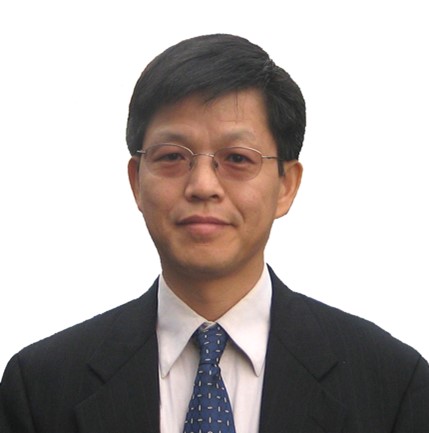tutor
导师介绍

冯新华
教授|博士生导师
生命科学研究院院长
xhfeng@zju.edu.cn
生命科学研究院
个人简介
浙江大学生命科学研究院院长,教授,博士生导师,首席研究员。
研究与成果:
在分子、细胞水平并结合动物模型,探讨信号转导网络、磷酸酶组和蛋白质翻译后修饰在正常组织器官发育、干细胞维持和分化以及癌症发生和转移中的生物功能及其作用机制。在细胞信号和相关的蛋白质修饰领域取得了国际同行认可的成绩,已经在国际权威期刊杂志如Nature、Cell、Molecular Cell、PNAS等上发表论文150多篇,总被引用次数10355次。
癌症发生与转移:信号传导、蛋白质修饰和转录调控等分子细胞机制的研究;癌症干细胞与癌症治疗的探索。
干细胞与发育:干细胞自我更新与分化的分子机制和生物学功能;组织分化、器官发育与动物模型的研究。在分子、细胞水平并结合动物模型,探讨信号转导网络、磷酸酶组和蛋白质翻译后修饰在正常组织器官发育、干细胞维持和分化以及癌症发生和转移中的生物功能以及作用机制。
代表性论文:
1.Feng XH and Derynck R (1997) A kinase subdomain of TGF-β type I receptor determines TGF-b intracellular signaling specificity. EMBO J. 16: 3912 - 3923.
2.Zhang Y, Feng XH and Derynck R. (1998) Smad3 and Smad4 cooperate with c-Jun/c-Fos to mediate TGF-β induced transcription. Nature. 394: 909-913.
3.Feng XH, Zhang Y, Wu RY, and Derynck R. (1998) The tumor suppressor Smad4/DPC4 and transcriptional adaptor CBP/p300 are coactivators for smad3 in TGF-beta-induced transcriptional activation. Genes Dev.12: 2153-2163.
4.Derynck R, Zhang Y, and Feng XH. (1998) Smads: transcriptional activators of TGF-β responses. Cell .95: 737-740.
5.Lin X, Liang M, and Feng XH*. (2000). Smurf2 is a ubiquitin E3 ligase mediating proteasome-dependent degradation of Smad2 in transforming growth factor-beta signaling. J. Biol. Chem. 275: 36818-36822.
6.Feng XH*, Lin X, and Derynck R*. (2000) Smad2, Smad3 and Smad4 cooperate with Sp1 to induce p15(Ink4B) transcription in response to TGF-beta. EMBO J. 19: 5178-5193.
7.Feng XH*, Liang YY, Liang M, Zhai W, and Lin X*. (2002). Direct interaction of oncogenic c-Myc with tumor suppressors Smad2 and Smad3 to inhibit TGF-β-mediated induction of the CDK inhibitor p15INK4B. Mol. Cell. 9: 133-143.
8.Lin X, Liang M, Liang YY, Brunicardi FC, Melchior F, and Feng XH*. (2003). Activation of TGF-β signaling by SUMO modification of tumor suppressor Smad4/DPC4. J. Biol. Chem., 278:18714-18719.
9.Lin X, Sun B, Liang M, Liang YY, Gast A, Hildebrand J, Brunicardi FC, Melchior F, and Feng XH*. (2003). Opposed regulation of corepressor CtBP by SUMOylation and PDZ binding. Mol. Cell, 11: 1389-1396.
10.Lin X, Liang YY, Sun B, Liang M, Brunicardi FC, and Feng XH*. (2003). Smad6 recruits transcription corepressor CtBP to repress BMP-induced transcription. Mol. Cell. Biol., 23: 9081-9093.
11.Liang M, Liang YY, Wrighton KH, Ungermannova D, Wang X, Brunicardi FC, Liu X, Feng XH*, and Lin X*. (2004). Ubiquitination and proteolysis of cancer derived Smad4 mutants by SCFSkp2. Mol. Cell. Biol., 24: 7524-7537. 12.Feng XH* and Derynck R*. (2005) Specificity and versatility of TGF-β signaling through Smads. Annu. Rev. Cell Dev. Biol., 12: 659-693. (review article)
13.Lin X, Duan X, Liang YY, Su Y, Wrighton KH, Long J, Hu M, Davis CM, Wang J, Brunicardi FC, Shi Y, Chen YG, Meng A, and Feng XH*. (2006). PPM1A functions a Smad phosphatase to terminate TGF-β signaling. Cell, 125: 915-928.
14.Wrighton KH, Willis D, Long J, Liu F, Lin X, and Feng XH*. (2006). Small carboxy-terminal domain phosphatases dephosphorylate the regulatory linker regions of Smad2 and Smad3 to enhance TGF-β signaling. J. Biol. Chem., 281: 38365–38375.
15.Dai F, Chang C, Lin X, Dai P, Mei L, and Feng XH*. (2007). Erbin inhibits TGFβ signaling through a novel Smad-interacting domain. Mol. Cell. Biol., 27: 6183-6194.
16.Wang D, Long J, Dai F, Liang M, Feng XH, and Lin X*. (2008). Bcl6 represses Smad signaling in TGFβ resistance. Cancer Research, 68: 783-789.
17.Wrighton KH, Lin X, and Feng XH*. (2008). Critical regulation of TGFβ signaling by HSP90. Proc. Natl. Acad. Sci. USA, 105: 9244-9249.
18.Wrighton KH, Dai F, and Feng XH*. (2008). A new kid on the TGFβ block: TAZ controls Smad nucleocytoplasmic shuttling. Dev. Cell, 15: 8-10. (preview)
19.Wrighton KH, and Feng XH*. (2008). To TGFb or not to TGFβ: fine-tuning of Smad signaling via post-translational modifications. Cell. Signal. 20: 1579-1591.
20.Li C, Liang YY, Feng XH, Tsai SY, Tsai MJ, O'Malley BW*. (2008). Essential phosphatases and a phospho-degron are critical for regulation of SRC-3/AIB1 coactivator function and turnover. Mol. Cell. 31: 835-49.
21.Yang XO, Nurieva R, Martinez GJ, Kang HS, Chung Y, Pappu BP, Shah B, Chang SH, Schluns KS, Watowich SS, Feng XH, Jetten AM, Dong C*. (2008). Molecular antagonism and plasticity of regulatory and inflammatory T cell programs. Immunity. 29: 44-56.
22.Wrighton KH, Lin X, and Feng XH*. (2009). Phospho-control of TGF-β superfamily signaling. Cell Research.19: 8–20. (review)
23.Wrighton KH, Lin X, Yu P, and Feng XH*. (2009). TGF-β stimulates Smad1 phosphorylation independently of BMP receptors. J. Biol. Chem. 284:9755-9763.
24.Dai F, Lin X, Chang C, and Feng XH*. (2009). Nuclear export of Smad2 and Smad3 by RanBP3 facilitate termination of TGF-β signaling. Dev. Cell, 16:345-357.
25.Martinez GJ, Zhang Z, Chung Y, Reynolds JM, Lin X, Jetten AM, Feng XH*, and Dong C*. (2009). SMAD3 differentially regulates the induction of regulatory and inflammatory T cell differentiation. J. Biol. Chem. 284: 35283-35286.
招生信息:分子与细胞生物学专业硕士、博士
研究方向
细胞信号转导网络在癌症发生和干细胞行为中的机制和功能

